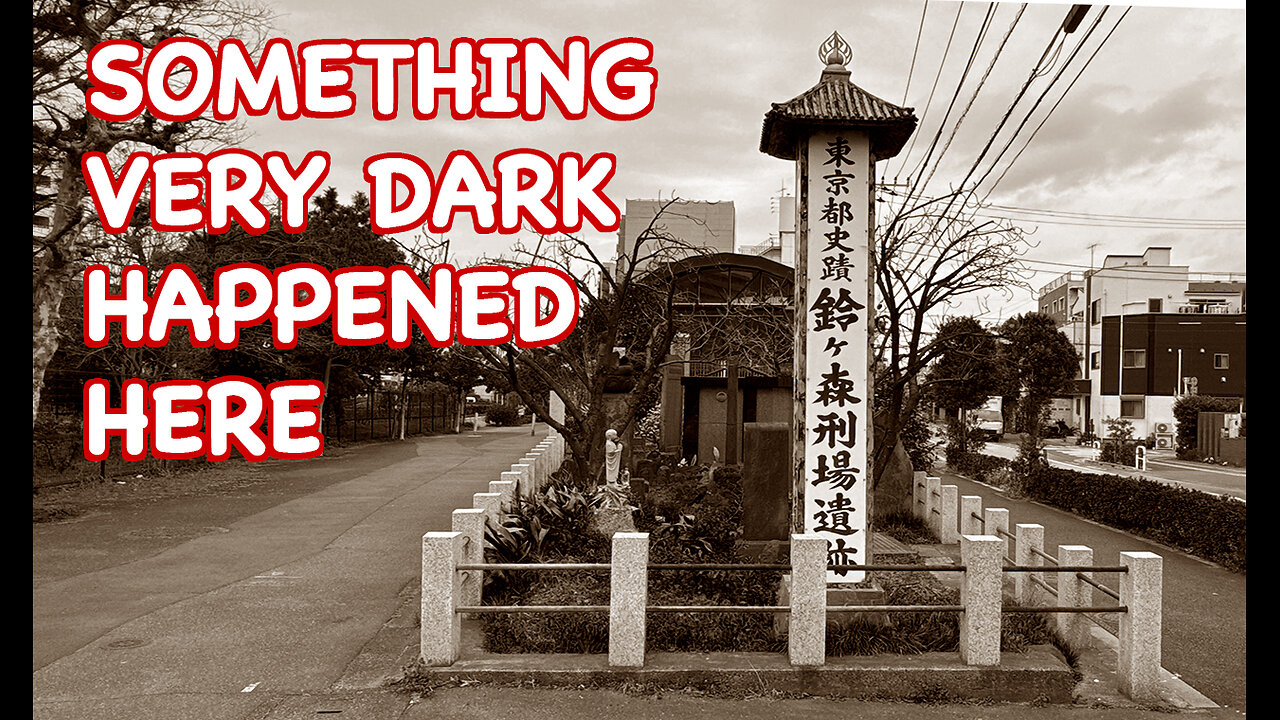Premium Only Content

Suzugamori Keijo: A Grim Chapter in Japan's History #truecrime
Japan's 99% conviction rate: https://rumble.com/v42h103-locked-up-in-japan-why-the-99-conviction-rate.html?mref=6xr1x&mc=45f6u
Cherry Blossoms: https://rumble.com/v4g87x9-cherry-blossoms-in-japan-a-springtime-spectacle-in-ueno.html?mref=6xr1x&mc=45f6u
Follow Weekly Fascination on social media:
X: https://twitter.com/WFascination
Podcast on Rumble: https://rumble.com/c/c-1470193
The Edo period (1603 to 1868) is romanticized as a time of economic growth and social order. Japan was emerging from the chaos of the Sengogku Jidai, the warring states period. The nation went into isolation, but art and culture were able to flourish, giving birth to ukiyo-e paintings and kabuki theater.
But there was also a dark side to the Edo period
They were able to keep peace through a very harsh system of punishment for lawbreakers
And many of those punishments were carried out right here, on this spot, during that time
This place is called Suzugamori Keijo. Established in 1651 and operated until 1871
Keijo means execution grounds. It is estimated that between 100,000 and 200,000 people were executed here.
The first person thought to be executed here was Marubashi Chuya, who was the leader of the Keian Uprising in 1651, which sought to overthrow the Tokugawa Shōgunate.
But the most tragic story is that of a 16-year-old girl named Yaoya Oshichi, who was convicted of attempted arson. At her trial, the magistrate, knowing that a 16-year-old would be tried as an adult and receive the death penalty if convicted, repeatedly asked her if she was 15. And since there was no reliable system for recording births at the time. If she had claimed to be 15, the story would have been ended much differently. She didn’t take the hint, and insisted that she was 16, leaving the magistrate no choice but to sentence her to death. She was burned at the stake. Her story has been told and retold in many plays and books. Sometimes accurately, sometimes not. But, either way, it’s heartbreaking.
But why this place?
2 main reasons
Executions were carried out on the outskirts to prevent “spiritual pollution” of Edo. They didn’t want the ghosts of the executed to wander around the city.
The bodies of the executed were left at the side of the road as a warning. This was the entrance to Edo, the old name for Tokyo, along the Tokaido, meaning Eastern Sea Road. This was the way to travel between Kyoto and Tokyo. And it was heavily travelled. Travel for commoners was mostly on foot.This means that as you entered the city, you had no choice but to walk past the grisly display, a reminder that the government would not tolerate crime, anti-government conspiracies, or even Christians.
How were these executions carried out?
Some were crucified, and some were burned at the stake. The luckiest were decapitated. But probably the most cruel form of punishment was suitaku. Suzugamori used to be on Tokyo Bay before this became reclaimed land. The condemned would be suspended on poles in the ocean
And as the tide slowly rose, they drowned.
Today
A few remnants are still on the site. It’s not a very big site. It was originally preserved at 74×16 meters (249x52 ½ feet), less than a football field. It is now much smaller due to the expansion of the nearby road.
There’s a well on the site which was used to wash the heads of the decapitated. The Japanese word for head is 頭 (atama) and the Japanese word for neck it 首 (kubi). But the sign at the site says that the well was used to wash the "necks" of people who were executed. Actually, when a person is decapitated, in Japanese they say the person has no neck (首がない kubi ga nai). The literal translation is that they have no neck, but the real translation is that they have no head. So the heads of the decapitated were washed in the well. It has been covered up to prevent copycats. There is a fear that killers might cut off a victim's head and wash it in the well.
There are two stone bases for erecting wooden poles used for crucifixion and immolation on the site. They have been moved from their original locations, but it’s still creepy knowing how many people died here, and how they died. People avoid this place at night, and you can imagine why. It’s considered one of the most haunted places in Tokyo.
There is a bridge called Namidabashi, or bridge of tears, nearby. It got its name because the condemned were made to walk across the bridge on the way to Suzugamori, that was part of the execution.The condemned were paraded around before they were executed. Once again as a reminder that crime would not be tolerated.
It’s hard to believe that such a peaceful place like Japan even has a historical site like this.
#japantrip #japaneseculture #JapaneseLaw #executioner #japanesehistory
-
 14:02
14:02
The Gun Collective
3 hours agoGuns That Just Came Out ... AND GUNCON 2025 ANNOUNCEMENT!
6.36K2 -
 1:01:18
1:01:18
In The Litter Box w/ Jewels & Catturd
22 hours agoNO SHARED WAR PLANS | In the Litter Box w/ Jewels & Catturd – Ep. 769 – 3/25/2025
74.1K14 -
 1:15:13
1:15:13
Winston Marshall
3 hours agoWhy White Women Are WOKE & The Awkward TRUTH about Ethno-Nationalism
22K13 -
 15:29
15:29
T-SPLY
6 hours agoDemocrats Have Started To Turn On One Another For New Leadership
38.7K11 -
 47:49
47:49
The Officer Tatum
4 hours agoLIVE: NOBODY REGRETS Voting Trump, Pastor Ricky Floyd's Death, Kyrie Irving WOKE Rant + MORE | EP 85
45.9K17 -
 3:16:44
3:16:44
Right Side Broadcasting Network
4 hours agoLIVE REPLAY: President Trump Meets with U.S. Ambassadors and More from the White House - 3/25/25
85.5K28 -
 33:45
33:45
Stephen Gardner
3 hours ago🔥BREAKING: Dems use PETE HEGSETH mistake to ATTACK TRUMP!
25.3K34 -
 13:24
13:24
Talk Nerdy Sports - The Ultimate Sports Betting Podcast
3 hours ago3/25/25 - 7 Picks You Can’t Fade – NBA, NHL & Soccer Locks
16.8K1 -
 3:47:23
3:47:23
Scammer Payback
4 hours agoCalling Scammers Live
45.6K4 -
![[Ep 635] Signal: Accidental, Intentional, or Dem Set-Up? | Jasmine Crockett: Unhinged Lunatic!](https://1a-1791.com/video/fww1/cf/s8/1/q/-/l/w/q-lwy.0kob-small-Ep-635-Signal-Accidental-In.jpg) 1:40:19
1:40:19
The Nunn Report - w/ Dan Nunn
3 hours ago[Ep 635] Signal: Accidental, Intentional, or Dem Set-Up? | Jasmine Crockett: Unhinged Lunatic!
7.33K1